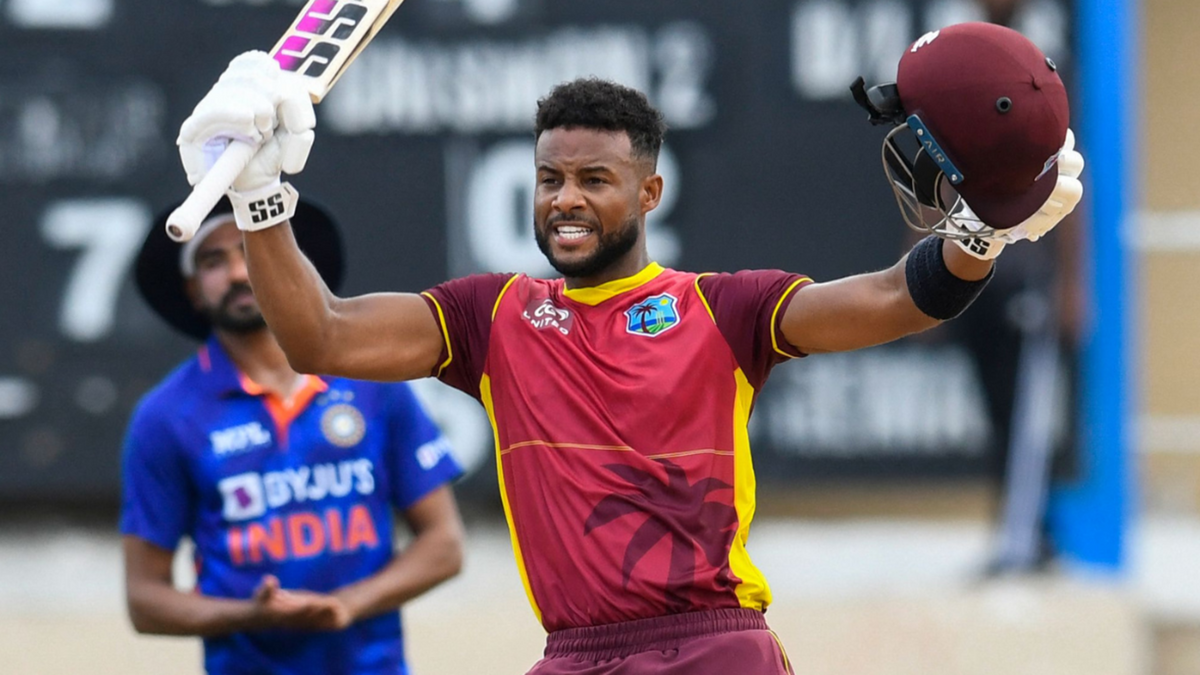
Shai Hope is ODI cricket’s quiet genius, but his move down to No.4 could see him transition to new levels of greatness, writes Katya Witney.
Shai Hope’s century in the second match of the series against South Africa on Saturday (March 18) was an encapsulation of the role he has fulfilled for the West Indies over the last four years. By the first ball of the tenth over, all of the West Indies’ top three had been dismissed. Despite a healthy start with 70 on the scorecard at the end of the powerplay, it now fell to Hope to see the innings through to its end and ensure West Indies capitalised on that start.
He executed that job to perfection, finishing unbeaten on 128 and batting until the 50th over, with South Africa set 336 to chase. No other batter in the West Indies’ side scored half of Hope’s total. He may have been batting in a position he hadn’t occupied for almost six years, but his integrity to the West Indies ODI unit was still just as profound.
Since 2019, Hope has cemented his place as one of the foremost ODI batters in the world. No batter has more runs than him in that timeframe, and he is among an elite group who have scored over 1,500 runs and averaged over 50. At 51.66, his average since 2019 is higher than Virat Kohli’s, Quinton de Kock’s and Jonny Bairstow’s. He has also scored more hundreds (10) than anyone over the last three years, and only Kohli and Babar Azam have more fifties.
In terms of his weight of runs, Hope is a modern-day behemoth of the format. But, the role he has had to play for the West Indies has capped his ceiling value.
Of those who have scored more than 1,500 runs since 2019, Hope’s strike rate (77.71) is the worst. Since August 2019 and before the series against South Africa, he has batted exclusively as an opener for the West Indies. Only Scotland’s Kyle Coetzer has a worse strike rate than Hope among openers who have played at least 25 matches since then.
The role of an opener in ODI cricket has evolved over the last decade, from an accumulative innings anchor to an all-guns-blazing boundary blaster. While there is still space for a more circumspect approach, particularly considering the pitches the World Cup will be played on later this year, the primary job at the top of the innings is to prioritise taking advantage of the powerplay over conserving their wicket. In an ideally balanced side, it now falls to the No.3 to anchor the innings should things go south early on.
For Hope, the lack of batting depth in the West Indies line-up means his priorities as an opener have been skewed. The requirements of his team haven’t matched that of his role.
Since 2019, Hope has played more ODI matches than anyone for the West Indies. He has also scored more than 1000 runs more than any other batter. In positions 1-4, that figure nearly doubles. Evin Lewis and Chris Gayle occupy positions three and four on the West Indies’ ODI run-scoring list over the last three years. But Lewis hasn’t been part of the set-up since 2021, and Gayle since 2019. The second spot belongs to Nicholas Pooran, primarily batting below No.4.
Hope has played a lone hand at the top of the order, and the West Indies’ reliance on him runs deep. Considering their position, there is logic to batting Hope at the top. With limited resources behind him, fifty overs of Hope is better than forty, or thirty on a good day. Why have someone who is by so far your best batter shunted down into the middle order? But, if West Indies are to keep pace with the development of ODI cricket, his move down to four is an important one.
At four, he can play the anchor role his game naturally suits if needed without the pressure of having to capitalise on the early restrictions. And, if he does come in after a good start, he’s talented enough to score at the tempo required. He finished his innings on Saturday with a strike rate of 111.30. Only one of his innings scores of over a hundred have come at a quicker rate. In a flexible middle-order mould where he can act both as the aggressor and the accumulator depending on the situation, his best could be yet to come.
While the West Indies have a way to go in finding a dynamic opening pair – both Kyle Mayers and Brandon King average less than thirty in ODI cricket – cementing a middle order spearheaded by Hope and Pooran is a start. Giving those at the top the freedom of their best batters coming in behind them, along with Holder set to come in at seven looks like a healthier balance – at least on paper.
But wherever he bats, Hope will still be relied upon to score the bulk of West Indies’ ODI runs. It’s hard to see a future in his career where that won’t be the case. Individually, though, freedom from the constraints of being an unnatural opener could be an important moment in his career. Yet to turn thirty and now the ODI captain, that licence could give him the opportunity to reach the next level of his potential. For the West Indies, that can only be a positive.








